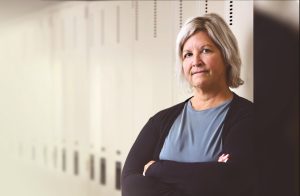By Paula Rochon and Surbhi Kalia
There are now more than 6.8 million older adults in Canada. By 2026, we expect our country to become a super-aged society, where 20 per cent of the population will be 65 and over.
Yet, Canada is facing a major policy gap: the lack of a national plan to support our aging population.
The impact of the pandemic on older adults, specifically long-term care homes, calls for critical action. Along with long-term care reform, we need a plan to meet the health needs of older Canadians in the community where 93 per cent of older adults live.
Canada has about 304 geriatricians, one geriatrician per 100,000—and a lack of access to primary care, not nearly enough to meet the demand of our older population, particularly in rural areas.
It is time we had a national aging strategy.
This strategy needs to be inclusive. A one-size-fits-all approach to support healthy aging will leave many Canadians behind, mainly women. Older women comprise the majority of the aging population.
Women have specific and unique health needs that are often unacknowledged by our health system and its care providers. Certain medical conditions such as osteoporosis, thyroid problems, and headaches, for example, present more often in women, and other conditions, like heart disease, present differently and are not always recognized by clinicians. Older women are also more likely to experience side effects from medications and may require lower doses of some medications than men.
These health issues are further compounded by the socio-cultural and economic inequities women face throughout life. Older adults, especially older women, do not always have access to non-insured health services, such as dental, vision and hearing care. They are more likely than men to face poverty, and not able to afford proper care options to live in their communities.
An effective aging strategy would enable older adults to actively participate and contribute within their communities, provide affordable options to health care and social services and address systemic inequities based on sex and age.
Healthy aging is a major global priority—it is on the top of the United Nations and the World Health Organization’s agenda. Countries like Japan and Singapore have made major investments to support their older population such as promoting life-long learning and social integration, as well as building age-friendly homecare and assisted living and designing age-friendly technology.
In Arnsberg, Germany, deemed one of the most age-friendly cities in the world, older adults can access affordable housing and care options, contribute and participate in social life and feel connected to their communities.
The world has given us a template to build our own roadmap. We need to apply these lessons and develop a path forward to address the unique needs of Canadians and build our own age-friendly communities.
We need a strategy.
Dr. Paula Rochon is a geriatrician and the founding director, and Surbhi Kalia is the strategy lead, of the Women’s Age Lab at Women’s College Hospital.














